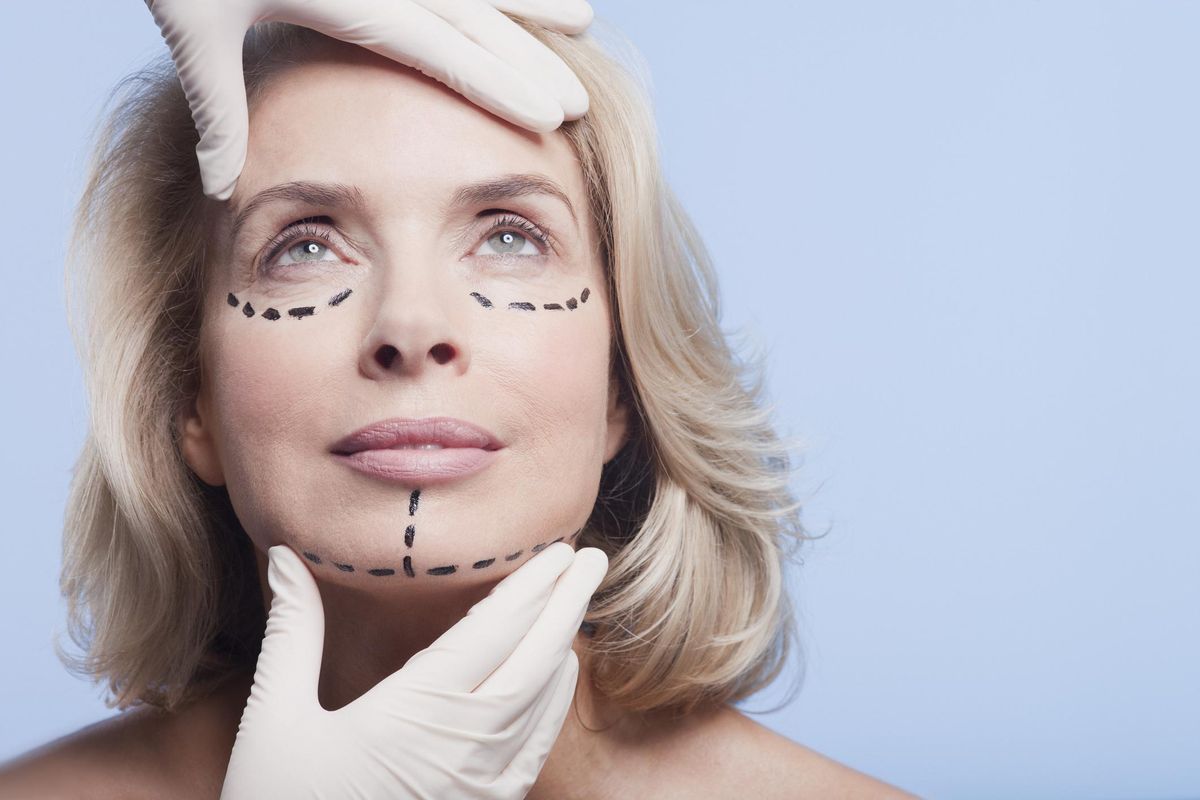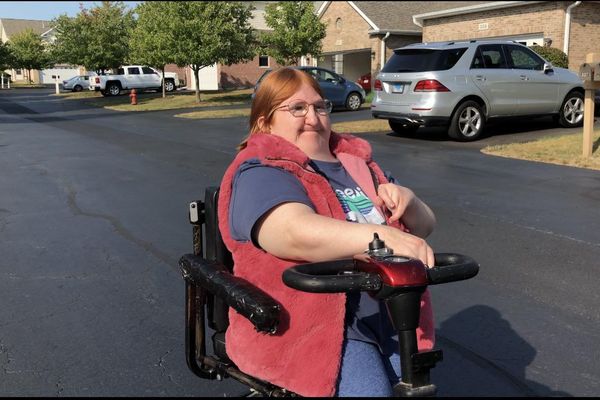After having her children, Tammy Delgado wanted a breast lift with implants. "The decision was definitely a confidence booster," she said. At the time, her surgeon performed umbilical breast implants. "He made an incision in my belly button and created a tunnel to the breast to insert the implant," Delgado explained. Ultimately, Delgado, now 52, has been happy with her breasts but there are things she wished she'd considered before her procedure. "Now even though I have amazing boobs, I don't like to wear bikinis because I am self-conscious of my stomach due to those scars," she said.
Delgado is one of the many women who have had plastic surgery. And in recent years, cosmetic procedures have been on the rise. In 2018, 17.7 million Americans underwent surgical and minimally invasive cosmetic procedures. And though the pandemic paused many elective procedures, there were still 15.6 million cosmetic surgeries performed in 2020.
The most common female plastic surgeries are breast augmentation, reduction and lifts; eyelid surgeries; facelifts; liposuction; and nose reshaping (rhinoplasty). And Allison Lied, M.D., a Cincinnati-based plastic surgeon and member of HealthyWomen's Women's Health Advisory Council, has been seeing an uptick in requests for cosmetic procedures of the face. "During all these Zoom calls, some women noticed certain aspects of their face that they haven't noticed before," Lied said.
While there are many plastic surgery stigmas, there are also positives to these procedures. Diana Schaefer, a counselor at Just Mind, LLC, who has helped patients navigate whether to go under the knife, has seen many clients feel better about themselves following plastic surgery procedures. "Clients have reported increased confidence," she explained.
Tiptoeing in
Surgery can be overwhelming. Thus, Lied said a good entry point for women considering cosmetic changes can be minimally invasive procedures, like Botox (botulinum toxin). "It involves a teeny needle and a few shots in the face and helps smooth out wrinkles," she explained. Botox, which lasts for three to four months, can reduce the appearance of wrinkles, including frown and smile lines, and provides an eyebrow-lifting effect. While some of these treatments can be performed in dermatological offices, Lied says plastic surgery clinics have physicians that specialize and are well-versed in these minimally invasive options. And nonsurgical body contouring procedures can reduce fat through freezing and radio frequency waves. "If you don't have the downtime that recovery [from surgery] involves or the budget, these procedures can be great surgical alternatives," Lied explained.
More permanent options
In recent years, Lied has had many requests for neck lifts and liposuction. She's also performed a lot of eyelid surgeries. "Ladies, even in their 30s and 40s, are complaining of looking tired, the feeling of heavy eyelids or not having well-defined upper eyelids anymore," she said. To combat sagging skin, people are opting for facelifts and sometimes combining them with neck lifts or fat transfers, where fat from the stomach or thighs is injected into the cheeks to combat age-related volume loss.
Women are also changing the shape of their noses and getting tummy tucks or liposuction to target areas like thighs. Craig Lehrman, M.D., a plastic surgeon at the Ohio State University Wexner Medical Center, performs a lot of "mommy makeovers." "This is essentially a tummy tuck to tighten the abdominal muscles after pregnancy and remove skin laxity that develops and some of the stretch marks. It's often done in conjunction with a breast lift or augmentation," he said.
Safety + effectiveness
Every plastic surgery procedure involves risks. "Common ones include infection, bleeding, reaction to anesthesia and the possibility of not having your expectations met," said Los Angeles-based plastic surgeon Roger Tsai, M.D.. "Your surgeon will perform an evaluation, which includes medical history, physical and lab work to give you a preoperative clearance," Lied explained. They will also discuss any specific risks associated with your type of surgery and your background.
Scars are unavoidable
Yes, you will have scarring. "There is no scarless surgery," Lehrman explained. Surgeons, however, do their best to get creative with scar placement and provide instructions on post-surgical scar treatment and care.
Your expectations need to be managed
Plastic surgery can improve specific features, but it isn't a complete body overhaul. Lehrman tells patients procedures like liposuction or tummy tucks are not weight loss substitutes. "You want to be near your goal weight before proceeding with any kind of major body surgery," he explained. "If you're 50 pounds from where you want to be, then you get these procedures and lose weight, you'll have a recurrence of all the things you were trying to address with the surgery — laxity of skin, breast ptosis (sagging), the recurrence of things we tried to tighten up." And don't expect to walk out of a surgeon's office resembling your favorite star. "Anyone that tells you they can make you look like a celebrity is going to steer you wrong," Lehrman warned.
You may need more surgeries
"Even the best surgeons can have complications and revisions," Lehrman said. And some procedures may require follow-ups down the line. "You're turning back the clock, but you're not stopping it. It's an evolving game." So if you get a facelift, for instance, the goal is to make you look 10 years younger. "But a lot of people come back for a second or third facelift down the road," he explained.
You will likely pay out-of-pocket
Your insurance may cover a breast augmentation after a mastectomy or a nose job performed during a deviated septum procedure. But plastic surgery is typically elective, which means you'll pay out-of-pocket. "In general, breast augmentation can range from $5,000 to $7,000 and a face lift between $10,000 to $15,000," according to Lehrman.
It’s all about finding the right surgeon
Working with a competent surgeon and refraining from overdoing procedures will set you up with your best chance of a positive post-surgical experience. "I feel like plastic surgery gets a bad rap because there are a lot of people doing things that are one not safe," Lehrman said. He noted, for instance, that 20% of plastic surgery procedures are not performed by board-certified plastic surgeons and stressed the importance of finding a qualified surgeon to accompany you on your journey. Board-certified plastic surgeons are certified by the American Board of Plastic Surgery (ABPS) and have completed surgical training and passed comprehensive exams covering all plastic surgery-related procedures. You can verify whether your doctor is certified on the American Board of Plastic Surgery website.
"Find someone with a proven track record, ask for before and after photos, and make sure your surgeon's goals align with yours," Lehrman said.
- Liposuction - HealthyWomen ›
- Cosmetic Skin Procedures - HealthyWomen ›
- Aesthetic Breast Procedures - HealthyWomen ›
- What to Know Before Getting a Tummy Tuck - HealthyWomen ›







